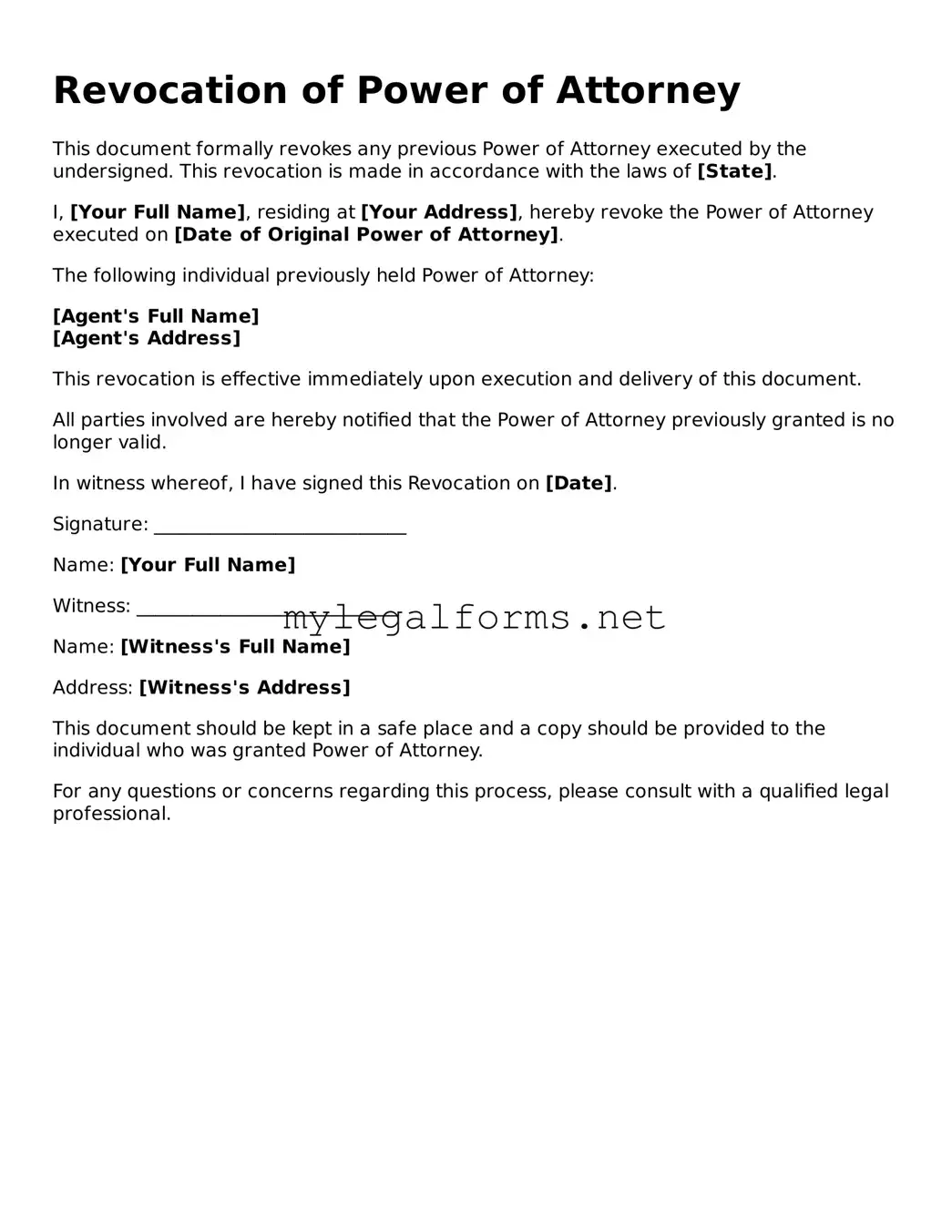Revocation of Power of Attorney
This document formally revokes any previous Power of Attorney executed by the undersigned. This revocation is made in accordance with the laws of [State].
I, [Your Full Name], residing at [Your Address], hereby revoke the Power of Attorney executed on [Date of Original Power of Attorney].
The following individual previously held Power of Attorney:
[Agent's Full Name]
[Agent's Address]
This revocation is effective immediately upon execution and delivery of this document.
All parties involved are hereby notified that the Power of Attorney previously granted is no longer valid.
In witness whereof, I have signed this Revocation on [Date].
Signature: ___________________________
Name: [Your Full Name]
Witness: ____________________________
Name: [Witness's Full Name]
Address: [Witness's Address]
This document should be kept in a safe place and a copy should be provided to the individual who was granted Power of Attorney.
For any questions or concerns regarding this process, please consult with a qualified legal professional.
